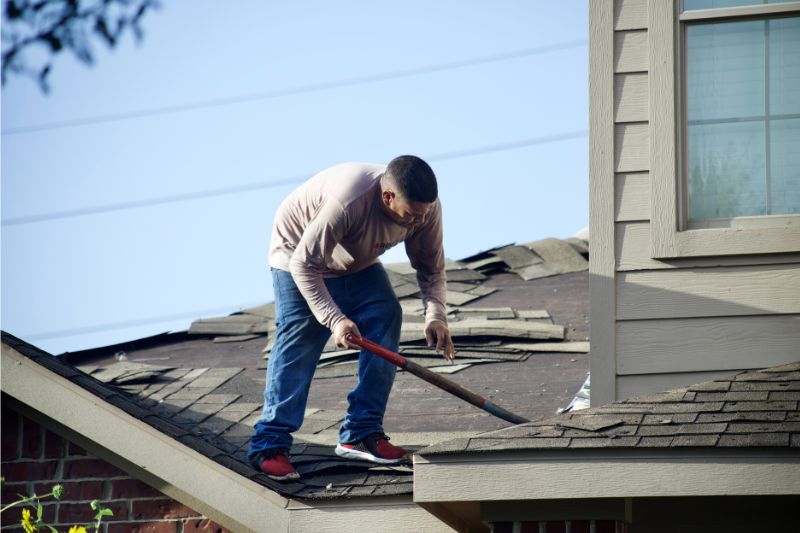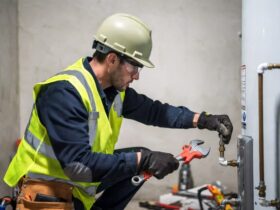No products in the cart.
How to Maximize Your Roof’s Lifespan and Quality

Your roof is a critical component of your home’s protection and comfort, shielding you from the elements and ensuring a safe haven for you and your loved ones. With the substantial investment that a roof represents, it’s essential to maximize its lifespan and quality to get the most out of your investment. Whether you have a new roof or an existing one, here are some tips and strategies to help you ensure that your roof remains sturdy, reliable, and aesthetically pleasing for years to come.
Proper Installation and Material Selection
The foundation of a durable and long-lasting roof begins with proper installation and material selection. Choosing high-quality roofing materials suited to your climate and weather conditions is crucial. Innovative techniques employed by Southern Californian roofers ensure that your roof can withstand the intense sun and occasionally heavy rain common in the region. Different materials offer varying levels of durability and maintenance requirements.
Consult with roofing professionals to determine the best material for your area. Moreover, the installation process itself should be executed by experienced and certified roofers to avoid common roof replacement mistakes that can significantly shorten your roof’s lifespan.
Regular Inspections and Maintenance
Regular inspections and maintenance routines are key to preventing minor issues from snowballing into major problems. Perform visual inspections after significant weather events or at least twice a year, ideally during the spring and fall. Look for loose or missing shingles, signs of water damage, and clogged gutters. Promptly address any issues you find to prevent leaks and water infiltration. Additionally, trim overhanging branches to prevent debris buildup and potential damage to your roof.
Professional Roof Inspections
While regular visual inspections are valuable, there’s no substitute for a professional roof inspection conducted by experienced roofing contractors. Schedule a comprehensive inspection every few years, or more frequently if your roof is older or has undergone significant weather events. Professionals have the expertise to identify hidden issues, such as deteriorated underlayment or compromised flashing, that might not be immediately apparent. Their insights can guide you in making informed decisions about necessary repairs or maintenance, ultimately contributing to the overall health and longevity of your roof.
Adequate Ventilation and Insulation
Proper ventilation and insulation are often overlooked factors that play a significant role in the lifespan and quality of your roof. Inadequate ventilation can lead to moisture buildup, which can weaken the structure and cause mold growth. Similarly, insufficient insulation can result in temperature fluctuations that put unnecessary stress on your roof. Consult with experts to ensure your attic and roof have the right balance of ventilation and insulation to maintain a stable environment.
Cleaning and Preventing Debris Accumulation
Leaves, twigs, and other debris can accumulate on your roof and in your gutters over time, leading to clogs and potential water damage. Regularly clean your roof’s surface and gutters to prevent blockages. Use a soft-bristle broom or a leaf blower to remove debris, taking care not to damage the shingles. Consider installing gutter guards to minimize the buildup of debris in your gutters, reducing the risk of water backup and ice dams.
Addressing Roof Leaks Promptly
One of the most common issues that can compromise your roof’s lifespan and quality is the presence of leaks. Even a small leak can lead to significant water damage, mold growth, and structural deterioration if left unchecked. If you notice any signs of a leak, such as water stains on your ceiling or walls, don’t delay in addressing it. Trace the source of the leak by inspecting your roof’s surface and shingles. Replace damaged or missing shingles and seal any gaps or cracks around vents, chimneys, and flashing. Prompt action can prevent a minor leak from escalating into a major problem that requires extensive repairs.
Snow and Ice Management
If you live in an area prone to heavy snowfall and freezing temperatures, proper snow and ice management is crucial for your roof’s longevity. The weight of accumulated snow and the formation of ice dams can put immense stress on your roof’s structure. Use a roof rake to safely remove snow from the edges of your roof after a snowfall.
Additionally, consider installing heating cables along the eaves to prevent the formation of ice dams. These measures will help prevent excessive weight and water damage caused by melting and refreezing snow and ice.

The strategies outlined – from proper installation and regular inspections to insulation, debris management, and addressing leaks – all play crucial roles in maximizing your roof’s lifespan and quality. By investing time and effort into these practices, you’re not only protecting your financial investment but also ensuring the safety, comfort, and aesthetic appeal of your home for years to come. Remember, a well-maintained roof reflects your commitment to safeguarding your living space, adding value to your property, and enjoying the peace of mind that comes with a strong and durable roof overhead.















Leave a Reply